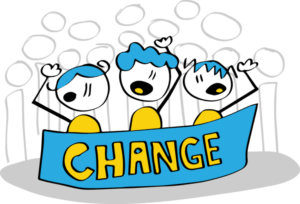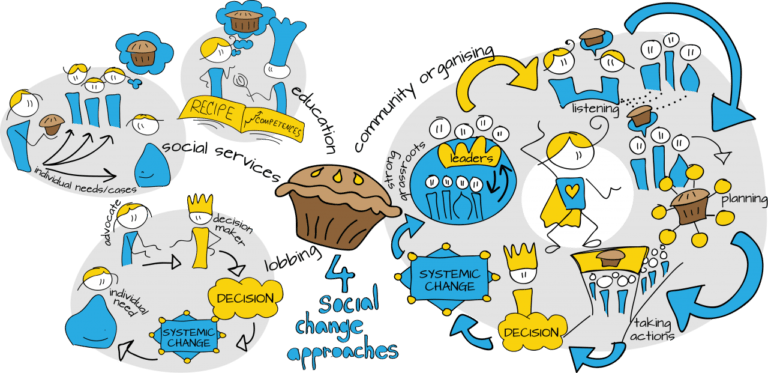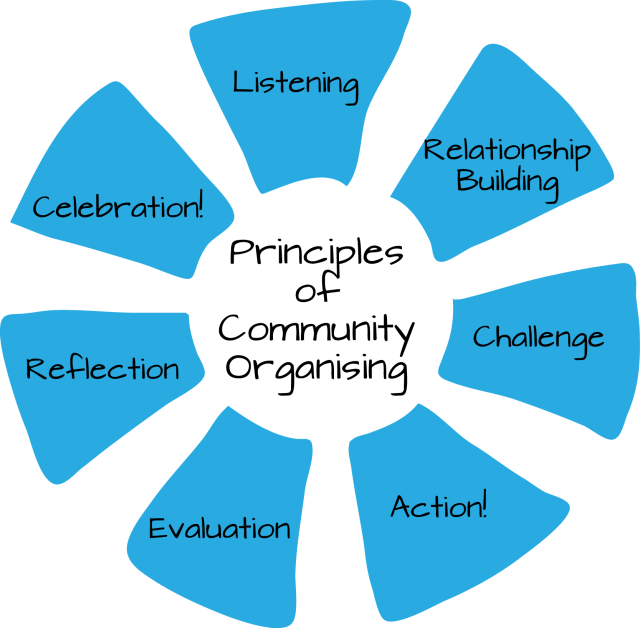Community organizing is a revolutionary political activity geared towards social change. This involves building structures of power around material struggles, which can endure and grow over time to yield tangible change for the base.
Four Types of Community Interventions
There are four fundamental strategies available to address community problems: community organizing, advocacy, service delivery and community development. There is no right or wrong strategy – every community needs all four strategies, to some degree. Each group should specialize – the skills needed to do a good job in one are seldom those needed for another. Sometimes, groups use a combination of strategies. What is important here is that you know what you’re doing – that the method matches the strategy you’ve chosen and they both match the mission the group has adopted.

Community organizing is characterized by the mobilizing of volunteers. Staff roles are limited to helping volunteers become effective, to guiding the learning of leaders through the process, and helping to create the mechanism for the group to advocate on their own behalf. Community organizing almost always includes confrontation of some sort. When the people who want something get themselves together to ask for it, often the people who could give them what they want get jumpy. Community organizing strategies include meeting with corporate or government decision makers to hold them accountable for their actions, designing programs that meet the needs of the community for others (not the group) to implement, and aggressive group action to block negative developments or behaviors (for example, highway construction that leads to neighborhood destruction).

Four Types of Community Interventions
There are four fundamental strategies available to address community problems: community organizing, advocacy, service delivery and community development. There is no right or wrong strategy – every community needs all four strategies, to some degree. Each group should specialize – the skills needed to do a good job in one are seldom those needed for another. Sometimes, groups use a combination of strategies. What is important here is that you know what you’re doing – that the method matches the strategy you’ve chosen and they both match the mission the group has adopted.
Community organizing is characterized by the mobilizing of volunteers. Staff roles are limited to helping volunteers become effective, to guiding the learning of leaders through the process, and helping to create the mechanism for the group to advocate on their own behalf. Community organizing almost always includes confrontation of some sort. When the people who want something get themselves together to ask for it, often the people who could give them what they want get jumpy. Community organizing strategies include meeting with corporate or government decision makers to hold them accountable for their actions, designing programs that meet the needs of the community for others (not the group) to implement, and aggressive group action to block negative developments or behaviors (for example, highway construction that leads to neighborhood destruction).

Conducted by Veronika Strelcova, senior organizer and mentor affiliated with CKO
